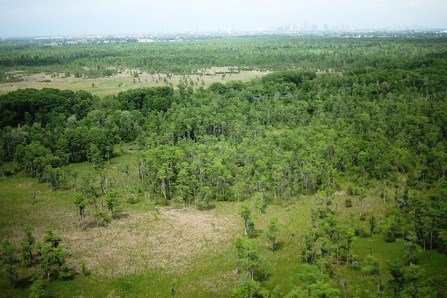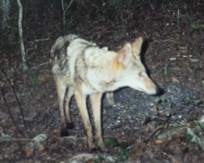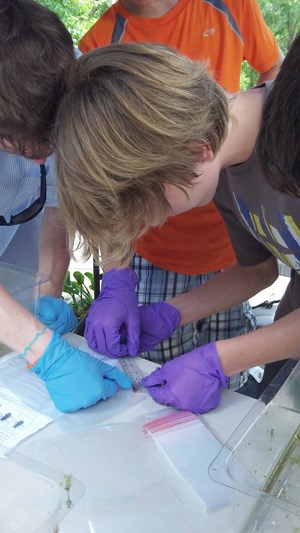
Right now, somewhere in the world, a Jean Lafitte investigator is at work. That investigator might be a scientist hip-deep in the swamp, setting up a camera to see what mammals use that habitat. It might be a high school student online, searching for details on a Battle of New Orleans soldier's life. It might be you at the Barataria Preserve, keeping track of the birds you've seen and stopping by the site's visitor center to enter your sightings on the eBird Trail Tracker kiosk Find out what Jean Lafitte investigators are doing and what they've learned below. If you'd like to join the Jean Lafitte team as a volunteer, follow the link! Outside Science (inside parks): Swamp Science in Jean Lafitte National Historical Park and PreserveThe Outside Science (inside parks) series shares stories of crucial, creative science. Each episode, produced in collaboration with Colorado State University, highlights the many ways young people are getting involved in science in parks. Part citizen science, part education, these videos cover topics such as sea turtles and light pollution, toxic algal blooms, and mercury levels in dragonfly larvae. Watch this episode that features Jean Lafitte!
Visit our keyboard shortcuts docs for details
Join the team at Jean Lafitte National Historical Park and Preserve as they use different techniques to measure how much flooding has increased at Barataria Preserve. NASA and Jean Lafitte's Barataria PreserveWhat does NASA (the National Aeronautics and Space Administration) have to do with Louisiana's vanishing coastline? Plenty! NASA's UAVSAR (Uninhabited Aerial Vehicle Synthetic Aperture Radar) has been flying over coastal areas and using radar to map the ground---and water---below, including areas of subsidence. Hopes are that data acquired by the flights will provide information that will spot problem areas and perhaps even provide early warning of levee failures and sinkholes. A NASA video that includes a visit to Jean Lafitte's Barataria Preserve explains the science and why it's important to everyone. 
Craig Hood Dr. Craig Hood's Mammal ResearchDid Hurricanes Katrina and Rita in 2005 affect the 25 mammal species of the Barataria Preserve? Dr. Craig Hood is trying to find out! Using his pre-Katrina study as a benchmark, Dr. Hood is looking high (for bats) and low (for mice) and everywhere in between. Follow the links to find out about his most recent study and about the 2003-2005 study. If you visit the Barataria Preserve and see a mammal, be sure to stop at the visitor center and share your sightings. The study findings include:
Nature's Notebook ProgramWhy does it matter when a red maple tree blooms in the spring? Students funded by the National Science Foundation and the George Wright Society found out when they participated in a Nature's Notebook program at the Barataria Preserve. 
Dragonfly Research and Jean Lafitte's Science & Stewardship CampIn summer 2013, Jean Lafitte became part of a group of 24 national parks studying dragonfly larvae as biosentinels (indicators) of methyl mercury in freshwater foodwebs. Participants in the preserve's Science & Stewardship Camp now work with college interns from the Student Conservation Association and park staff to conduct the study each summer. Everyone has a blast observing the dragonfly larvae, which look like alien creatures. Although dragonfly larvae are carnivores, mercury---a toxic heavy metal---can build up in them when they eat something that's been eating vegetation (mercury can be absorbed by plants as part of their nutrient cycle). If something eats the dragonfly, and then something eats what ate the dragonfly, mercury can continue up the food chain. Those at the top---like eagles, alligators, or humans---can become very sick if they ingest mercury. Dragonflies are a good biosentinel to indicate mercury in the food chain because there are a lot of them and they are easy to catch and study. BioBlitzIn May 2013, over 3,000 people gathered at Jean Lafitte's Barataria Preserve for a BioBlitz---a 24-hour inventory of as many living things as possible. Volunteer scientists, staff from the National Park Service and National Geographic, students on school field trips, and interested community members hiked, paddled, cruised, and crawled through the preserve. See what they found and discover links to more recent BioBlitzes, videos, and more. |
Last updated: February 4, 2022

